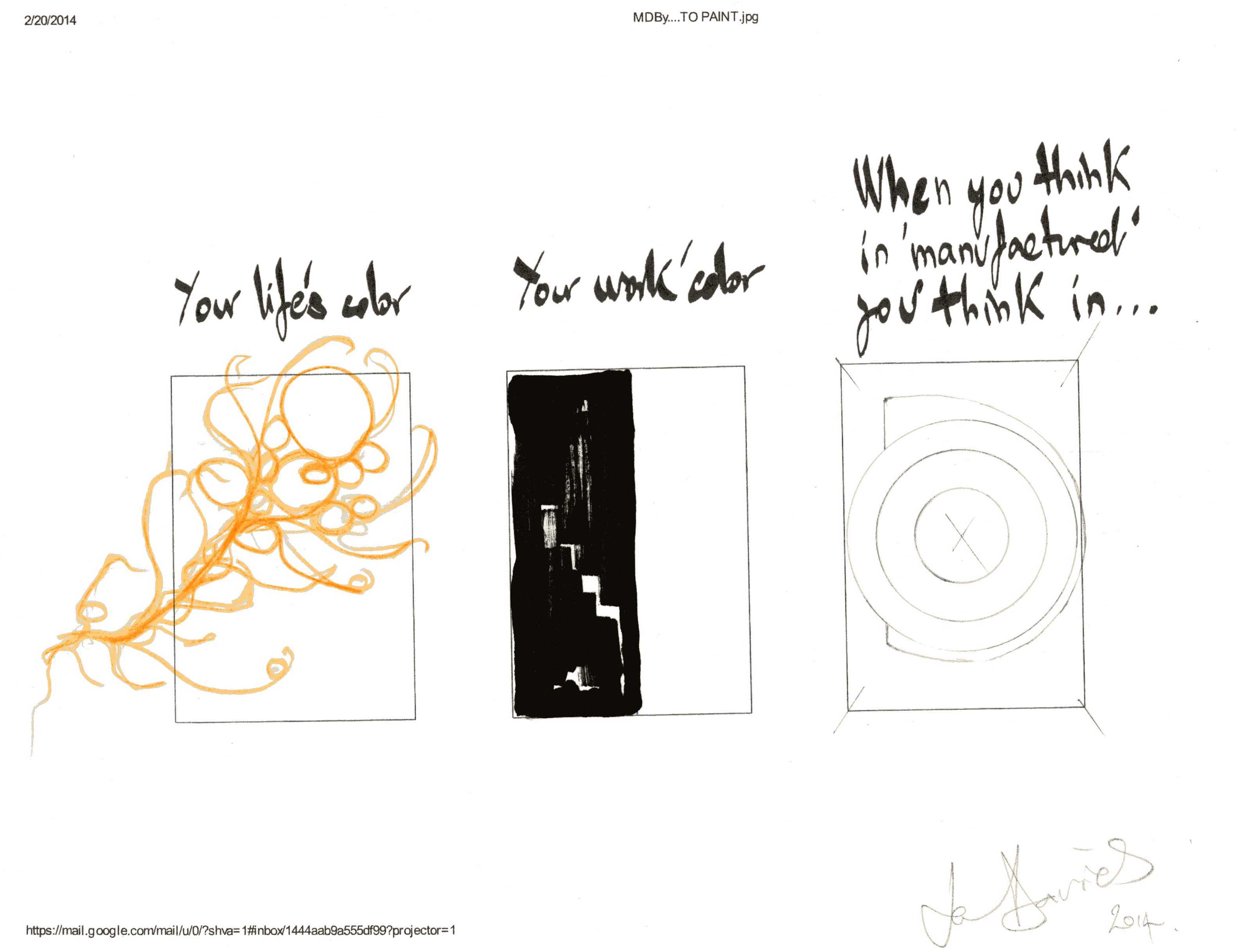mdby……JO DAVIES
So far we have presented several artists and their works in ceramic, today we talk about Jo Davies, who really describes her work in a very similar way to the work of an architect, the design proces, customer relationship …. it’s good to see that this also happens in other professions ….!
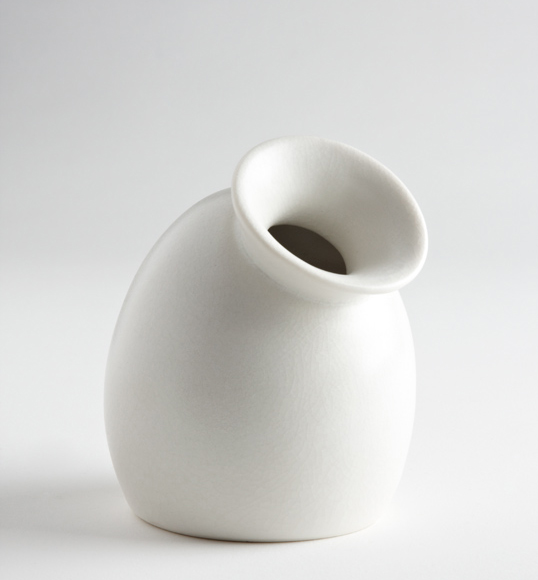
I really like your work, you create with clay, How do you define your work?
My work is a bringing together of contrasts – wet and dry, wriggling and still, sharp edges and blunt forms. Each design is the product of an evolution of my visual language, developed over many years. The bringing together of the plain circle or oval with fluid shapes in one object is a device used to show the qualities of each component, and to create a tension between them. I am appropriating architectural, decorative forms and using them to create objects that have sensuality, that move away from the formal rigidity of architectural structure, and into irregularity
The exploration of clay is probably the most important aspect of my work. As I see it, an object I have made is best when it crystallises the liquidity of clay in the final ceramic. The glazes I use are chosen because they enhance this sense of water and flow created in the object’s making on the throwing wheel. This work is not an allegory and does not have a scripted narrative; it is instead the result of an intuitive enquiry into clay, using a visual language that is gradually unfolding with each piece made.
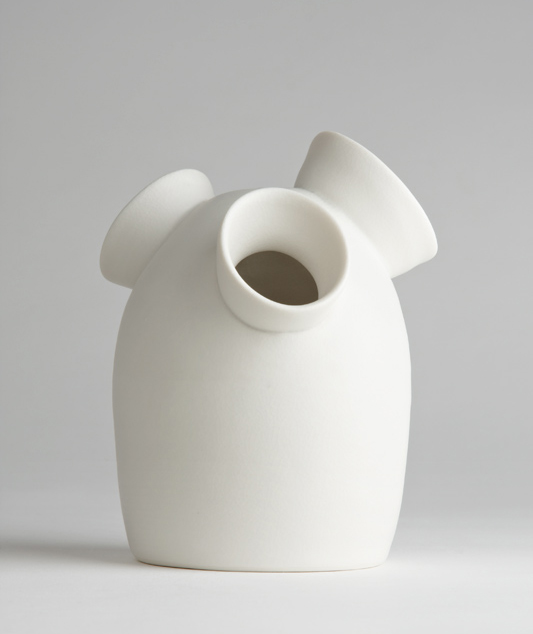
You finished your Ceramics and Glass MA at Royal College of Art in 2007, and in these years you have done a lot of things, creating your own space and participating in several exhibitions, how did you get to it?
It’s been a long process but I always knew I wanted to do this, ever since I was a teenager. I have followed my passion for a long time, making sacrifices along the way, going without some comforts to buy clay. However, that’s the way it is when you’re setting up. Being in London I come in to contact with a lot of opportunities and people who I learn from. Gradually I have acquired lots of knowledge and ability to manage my work and time and I am able to spend, unlike many artists and designers, my whole working life on my ceramics practice. I’m always looking for the next thing and always keen to take up opportunities that come my way. My work defines what I am so it’s important that I continue to drive myself forward and this is why I have managed to do quite a bit since 2007
Was it hard sometimes? Have you ever discouraged?
Yes! I still experience times of discouragement. Because my work means so much to me I can easily be discouraged by the inevitable occasional failure. However, the drive to make, to be working with clay always wins. Failure can be an important creative tool, driving me to improve something I couldn’t see was wrong in my work. I have also understood over time the need to make and to continue even if I don’t absolutely feel at my best, even if I do feel discouraged. Giving in to being discouraged by anything would be much worse. As well, my parents were a lot older and, being English too, they were reserved and didn’t give me much positive re-enforcement, as many children seem to receive now, so I’m used to just getting on with what I’m doing without the need for constant encouragement.
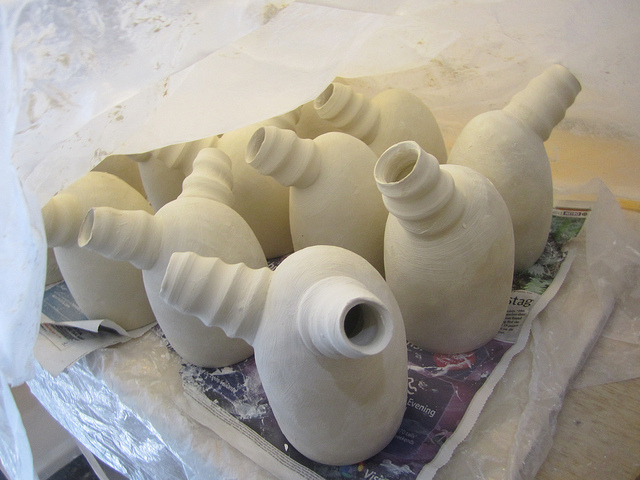
Did you have a mentor who told you some key points?
I have only had one, unequivocal mentor, who was my Ceramics teacher at school – Glenys Major. She pushed me to carry on and then followed my progress through my degree and masters degree and we are still in touch. Other mentors over the years have been more difficult relationships. A more recent mentor was Charlotte Hodes, an artist I worked with for several years to produce ceramic work for her solo exhibition in the West End. She was a real help to me during a transitional period of time after the RCA, she always came up with good advice and was very generous to me.
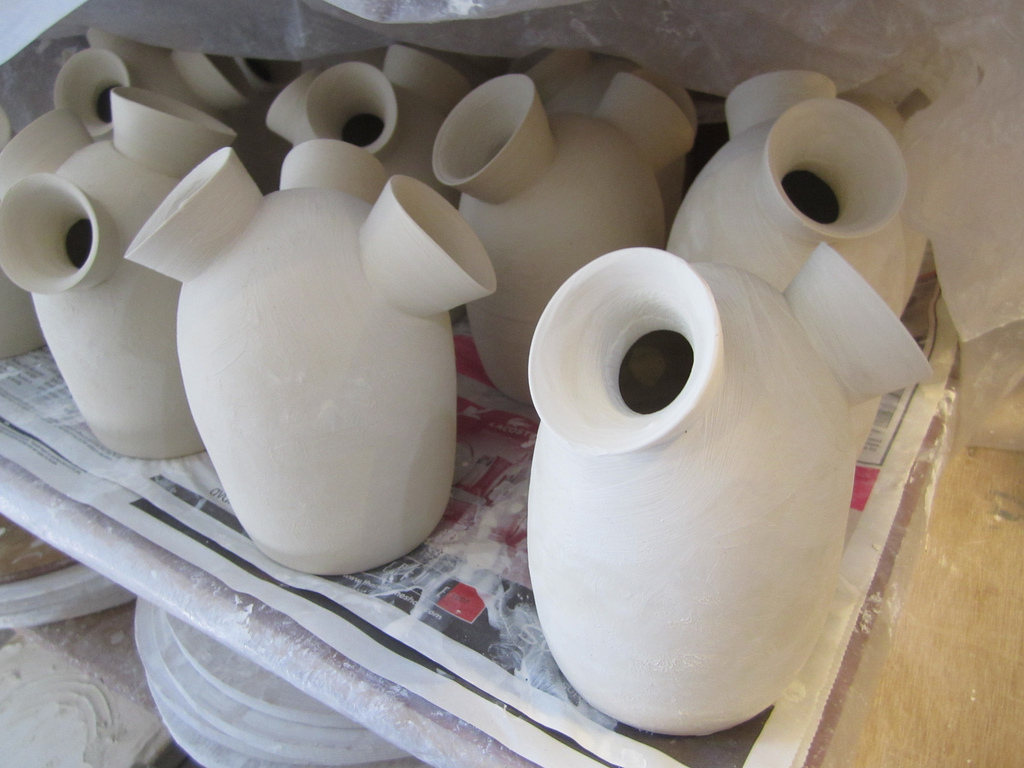
How does it work until you are able to live from what you sell? Which ways did you use to get to be known?
I used to have a part time job which was nothing to do with ceramics, living off less money but having the time in my studio. I did this for about 3 years before applying to the RCA. Once I had done my Masters my professional life transformed. My own experience of the final show at the RCA was good and it made me realise that I could make a living form the work that I developed there. I rode the wave of interest in my work and gained confidence in approaching galleries. Because I was always prepared to live from less in order to facilitate my work in the early days it allowed me to make my studio practice the priority. After the RCA, I wanted to be based in the studio rather than having a part time job as before so, alongside making and selling my work, I also worked on projects that I could undertake at the studio. This is how I met Charlotte Hodes and have worked with many artists and designers to produce their work since. I only occasionally do this now, for very selected individuals or organisations, who I know will have the budget to pay for my time but also because my own practice takes up the majority of my time now. For instance, I’m currently working on a piece for the Victoria Miro Gallery, re-making a large-scale ceramic piece for one of their artists. Miro came to me after a recommendation.
Word of mouth seems to be a good method of advertising for me but also a well connected website does wonders. I feel that too many ceramic artists disregard digital media, instead choosing to set themselves as something opposite because what we do is so physical, but I feel that the internet is an amazing tool and should be embraced with a thoughtful profile and good photographs. At this point I should probably admit that one of my secret weapons is my husband who is a very brilliant studio photographer, Matthew Booth!
I have also always been quite open about showing and sharing my work when I’m approached so when a magazine emails me to ask for images then I will give them quickly, I understand that delays mean lost opportunities. I am also generous with my time, so when students get in touch, for instance, I will often take the time to write a good reply or meet with them at the studio in order to give them a greater understanding, if that’s what they have asked for. People are interested in my work often because they may have heard about it from more than one source so the marketing methods I use must be multi-channeled.
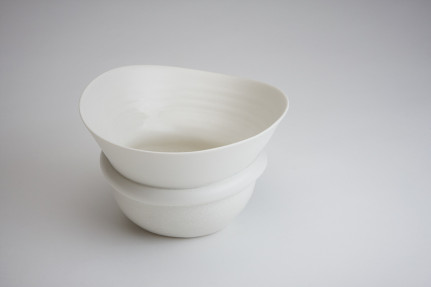
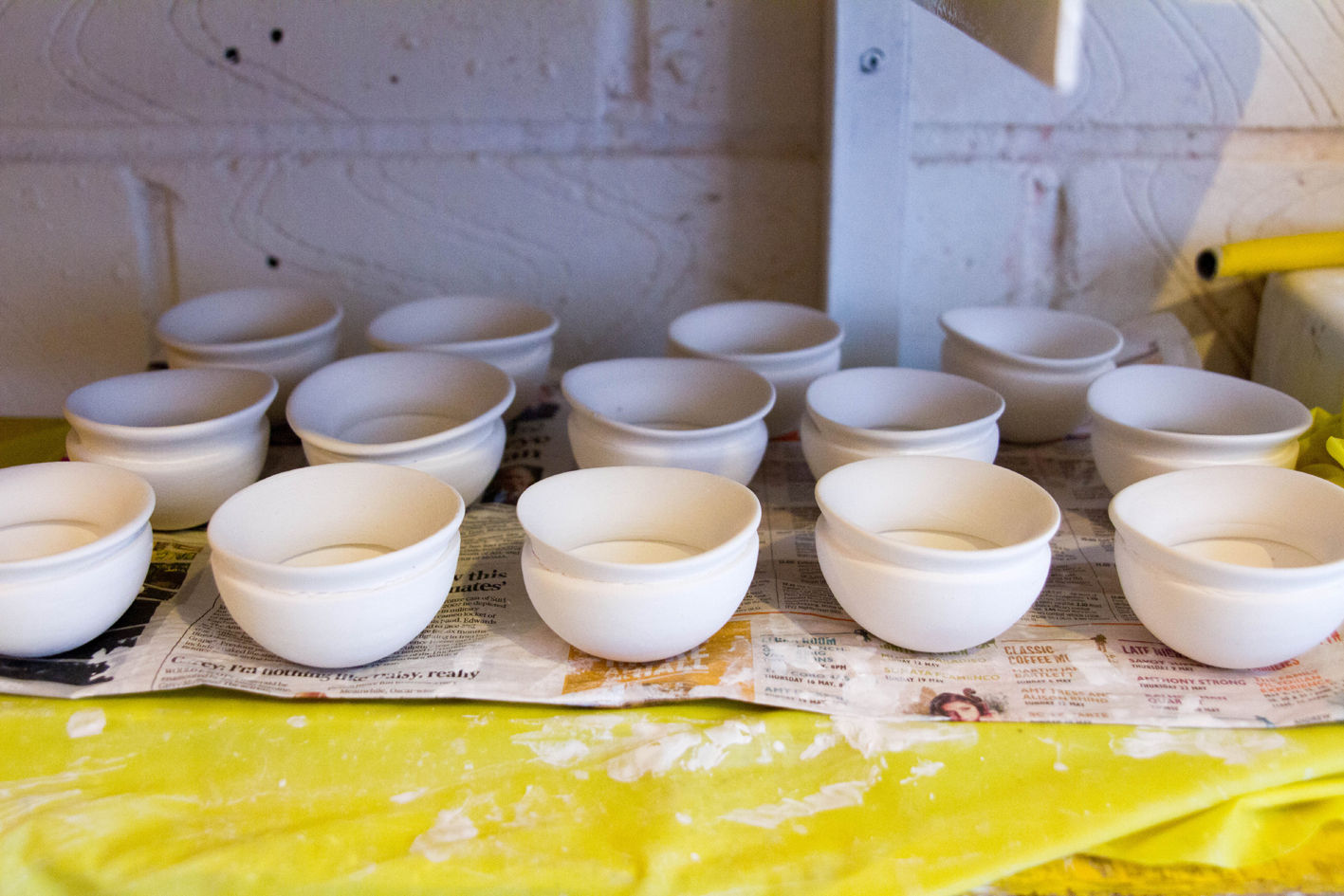
You work with porcelain clay, did you work with different types of clay before choosing porcelain clay?
In the early days I was working with porcelain but not exclusively like I am now. It would have been too hard to work with it all the time as it’s not a very forgiving material, especially wheel-thrown functional ware. I used to work with black earthenware and terracotta a lot as well. .
Colors do not take part of your work as an important issue, just white or black, which is the reason for it?
Shape and form has always been the most important thing for me. I have lots of colour in my everyday life: like the objects in my home, and I mostly wear colour. It’s a bit odd. However, I think the reason is that colour has so many connotations for me and I don’t want those connotations to be a distraction from the shape of each piece. If any one of the pieces I make were red, for instance, you would read them very differently. Colour can make objects very light-hearted, whereas my work needs to have a sophistication and sensuality that also allows the viewer to read the material they are made from. If the work was coloured then the nearly liquid form of many of the curves would be overwhelmed. .
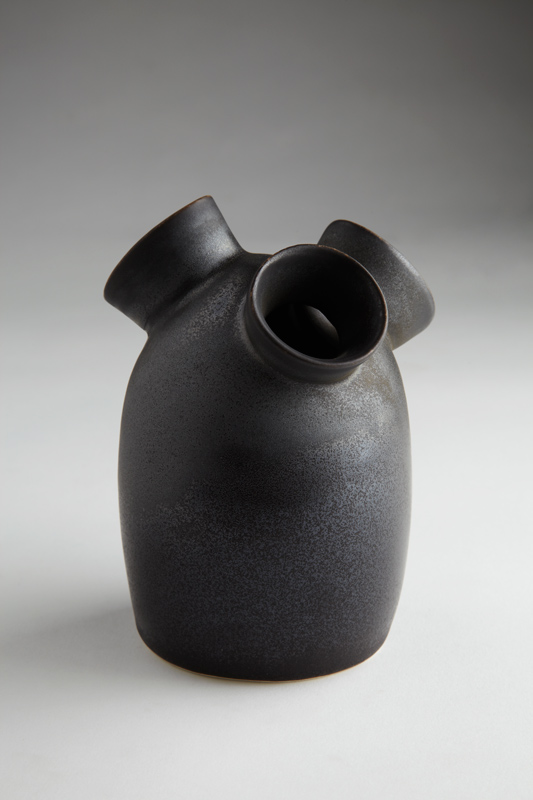
Any artist as reference?
Barbara Nanning, Takeshi Yasuda, Ruth Duckworth, Ghery, Camille Claudel
You have a wide range of vases, and several ceramic lights, what is next?
Currently extending the range of Twist Pendant lights, to include a more dynamic range to choose from, all still at £95 each. I’m also working on tableware – plates and bowls to complete the range of beakers and Egg cups I have already launched.
I have also been invited to research new work in response to Doddington Hal, a stately home in Lincolnshire, to be put on show in August 2014, I am still working out what form this will take…
Your “See Vase” reminds me of the Spanish “botijo”, does it have anything to do with it, or it is just my imagination ;))?
Just a coincidence I’m afraid. Very interesting shapes, thank you for pointing them out to me.
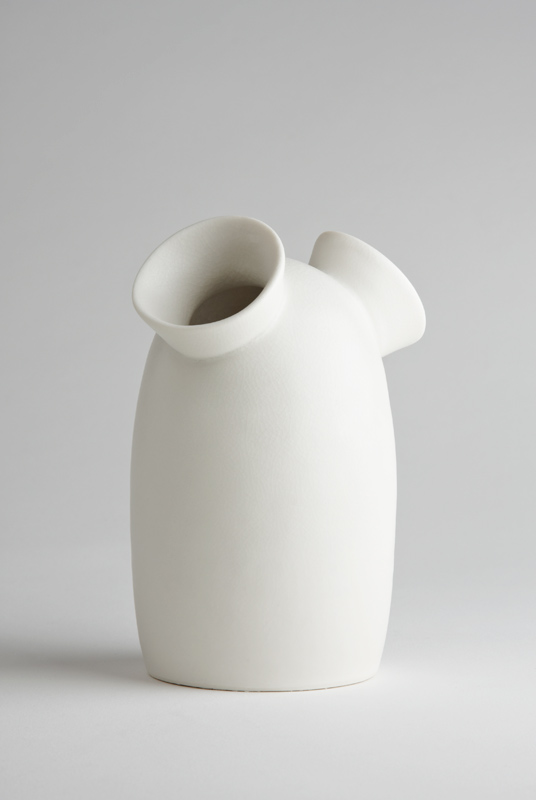
How many units of each model do you make? When do you decide to make a limited edition of some of your works?
It often depends on my mood and how I feel about an object I’ve made. I sometimes deliberately set out to make objects that are one-off’s but limited editions can often come about because I have a sense that they are only for an educated, niche audience because they are more challenging objects, or they can be difficult to make proportional to the size and so the price is high or perhaps the objects are made across the course of a short time in response to something specific but I have worked on them at the same time so they are a limited edition and because they feel more like Art than Design.
Do you numbered each piece or mark it in some way? Or just the limited editions?
Every piece is stamped and I’m now getting into the habit of dating all one-off objects and limited editions.
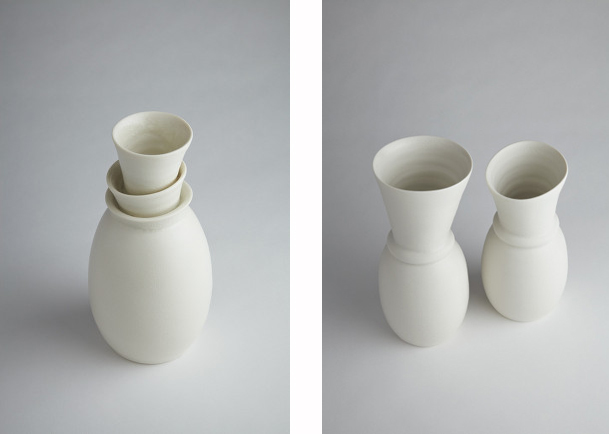
Any surprise when opening the kiln after firing process?
Yes but the surprises are fewer and further between as I have control over the process. A surprise would only mean a firing-fault now and is never a good thing. The experimentation happens before the firing but sometimes I’m simply looking to see if a new shape will withstand the firings and how far can I push the boundary of the material before it collapses, I’m increasingly familiar with that boundary but new shapes always result in a new detail of knowledge.
How long can it take to create one of yours creations?
6 weeks for the more complicated pieces – mostly drying the work takes time. Porcelain needs care during drying, especially the way I use it, joining pieces of clay puts some shapes under more pressure. Drying slowly is the perfect way to counteract this so the cold British weather really helps!
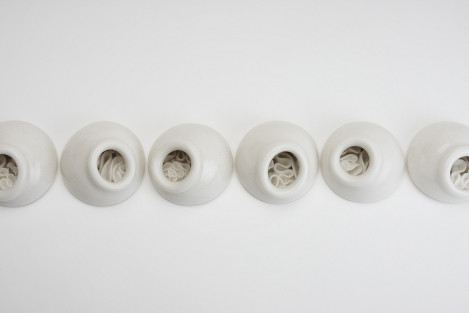
For whom you fabricate these pieces? Do you ever imagine the final client?
Sometimes but more often I’m imagining the space they will occupy. For commissions, I like to become familiar with the client. Sometimes they are already known to me – regular customers might ask for something special to be made – but, if it’s someone new then I like to chat with them, they don’t necessarily understand this is part of the process for me but I feel it’s important because I have an understanding of where their priorities are, what type of person they are and therefore I can make educated guesses about their personal aesthetic. They will often tell me about other objects they own or give me clues about where the object I’m making for them will go or it might turn out to be important to see the space. All these things help me to modify and design with them in mind. Clients often think that the commissioning process is more simple than it is, assuming that what they have in their mind is obvious because it’s obvious to them, not understanding that there are a thousand details to be resolved before achieving the final piece. For instance, there was an occasion when I wasn’t able to research my customer as fully as I would have liked. It was a pair of large vases commissioned for a hotel in Moscow by an art consultant based in Korea. Had I been more experienced at the time I would have asked for some more consultation time via Skype but, having been given the commission, I wanted to show I was able to simply get on with it without any fuss. I made the work but ultimately felt very dis satisfied with the process because there had been no opportunity to discuss at the beginning, nor at the midpoint, modifications or appropriateness of the designs being commissioned and the problems that were coming up with these unique pieces. Now I always carry clients like this with me during the making process in order to make them aware of the joys and difficulties of the object I’m making for them. It’s better..
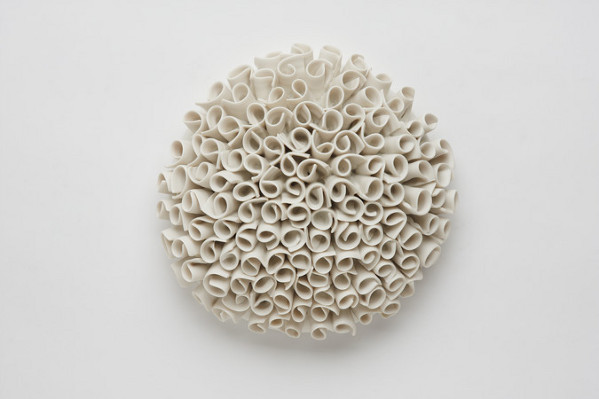
Which would be your ideal project? Your dream for your career?
Good question…working on a large scale interior project which challenged me to make site-specific work in collaboration with a client. A project that not only used existing work but one that asked me to make new work in my aesthetic to make a piece that was a decorative centrepiece inside a home or public space. I don’t want to sound like I’m angling for a commission but I would definitely love to work with architects!
Which is the most difficult thing in your work and the one you like more?
My new Stretching and Upright Handle Bowls
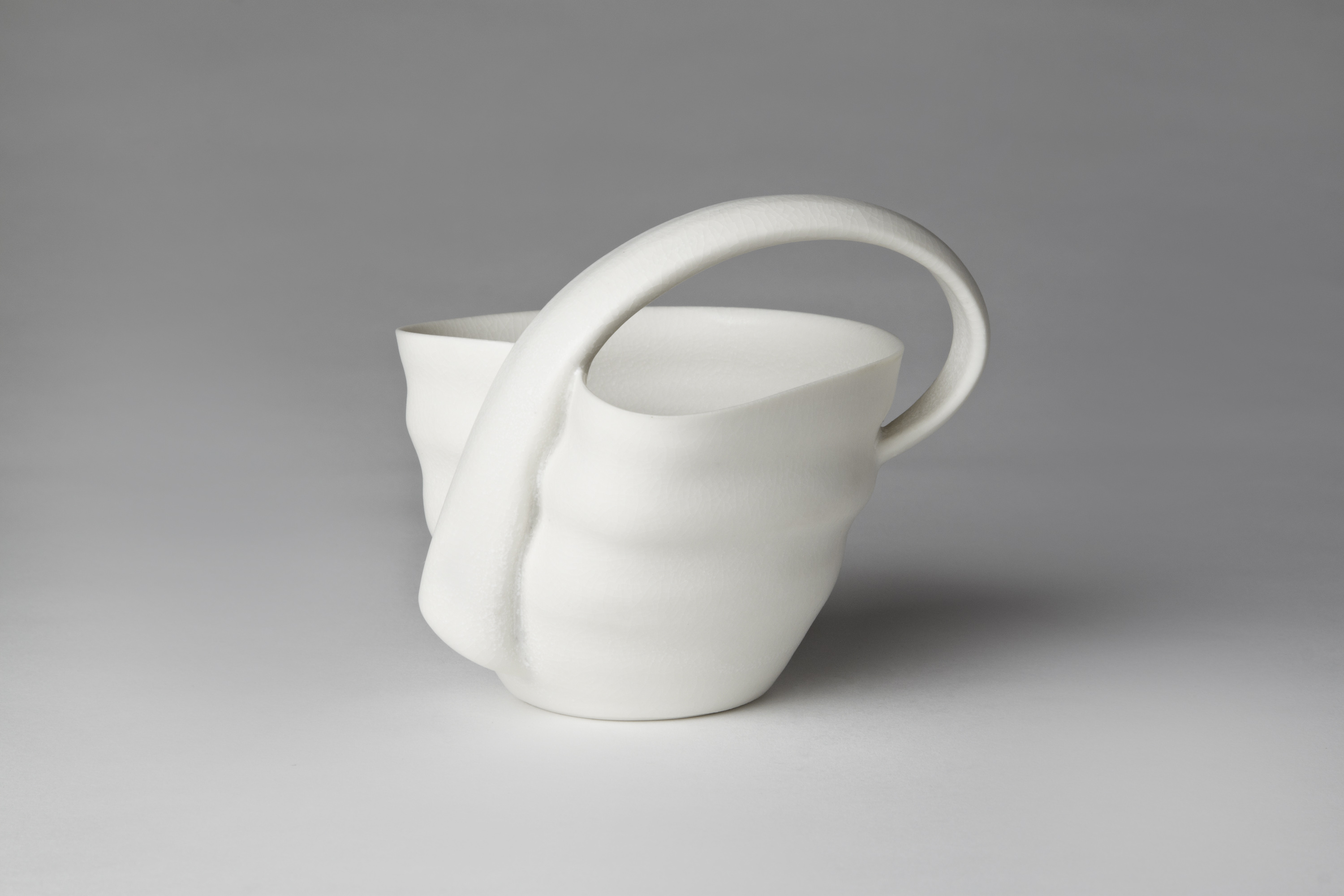
Which one has been your biggest success until now?
Twist Pendant
What’s your dream in life?
To be internationally known and respected. To have my work collected by important galleries and museums and to be able to do this for the rest of my life.
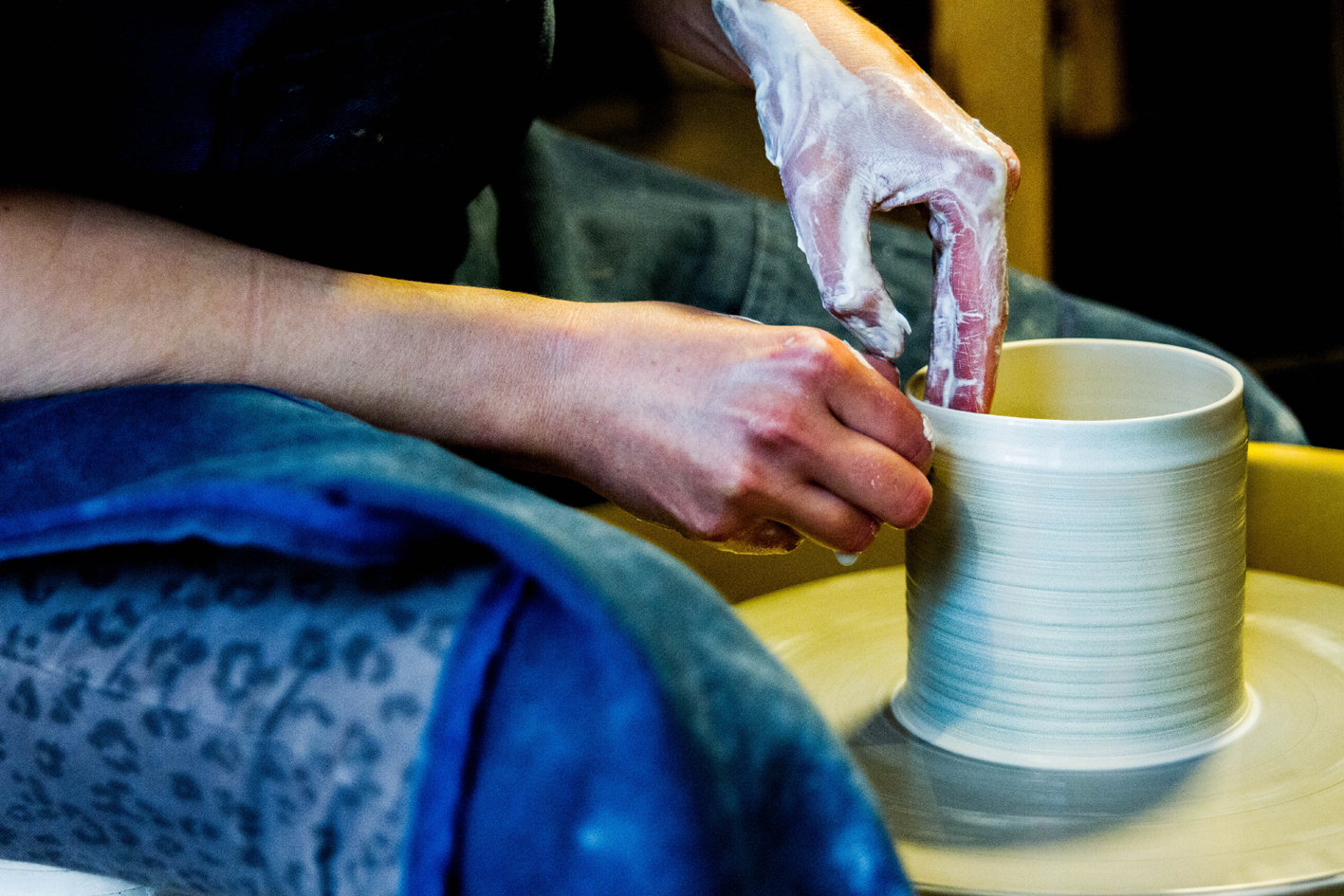
What is beauty for you?
Clear shapes and clean lines – this is a very boiled down definition, beauty is very wide but this is what I’m seeking in my own work.
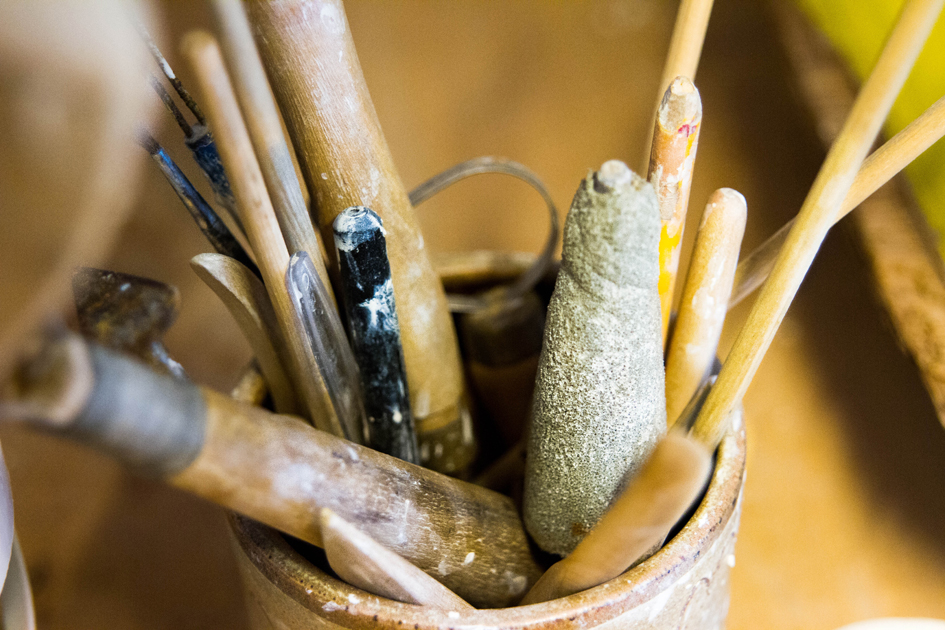
What would be your advice to someone who wants to do what you’ve done?
Apart from your family, your work has to be the most important thing to you.
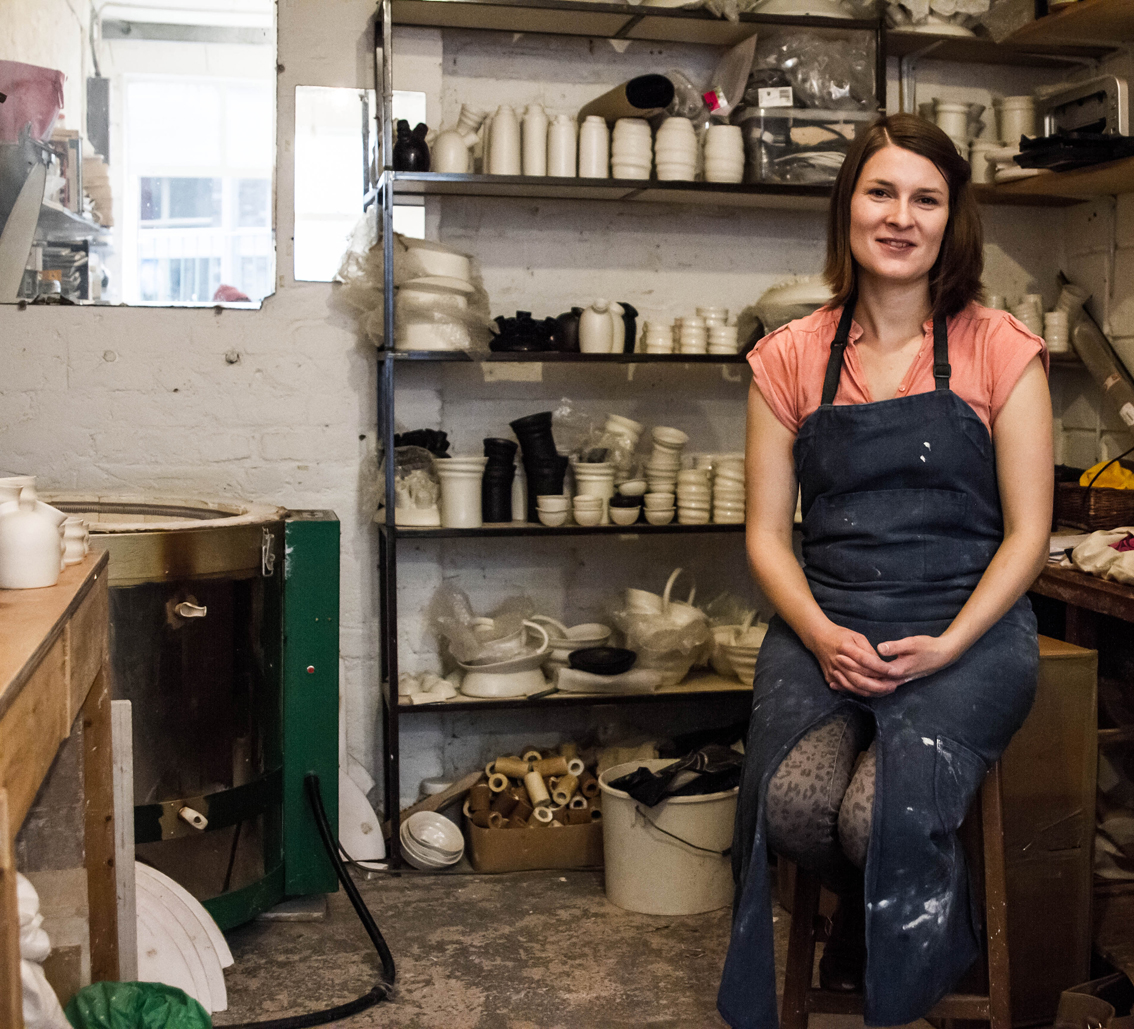
And finally…..her “mdby paper image”….
